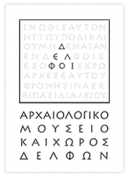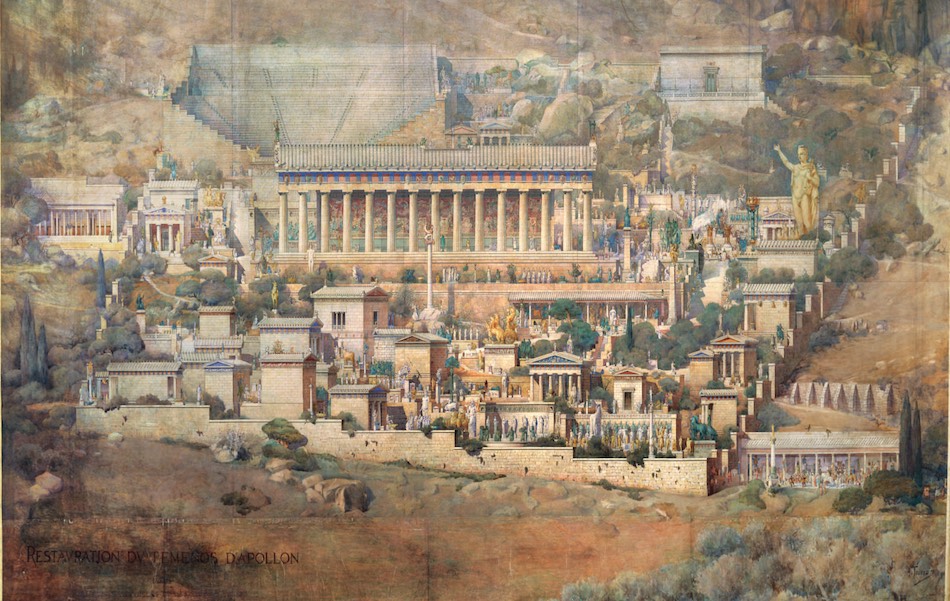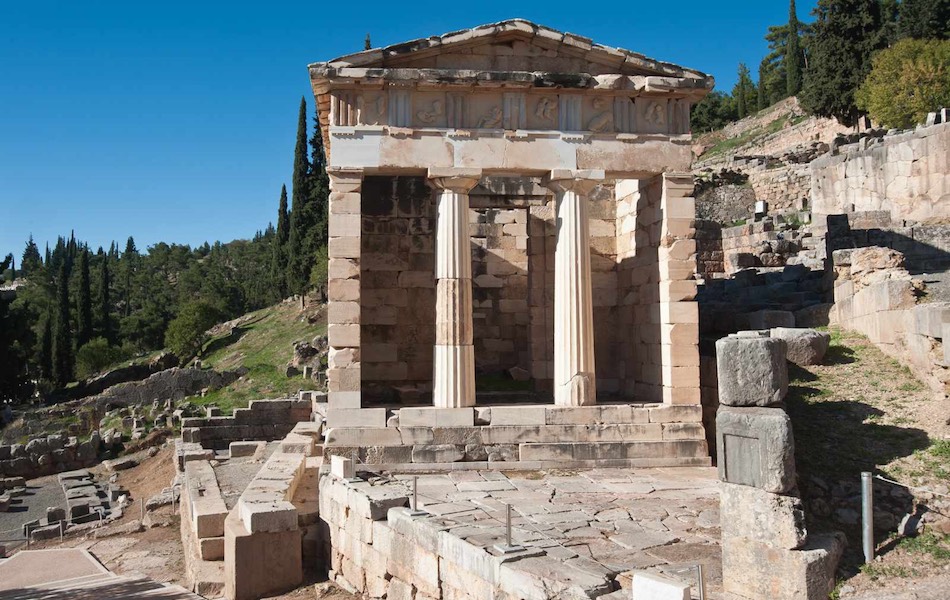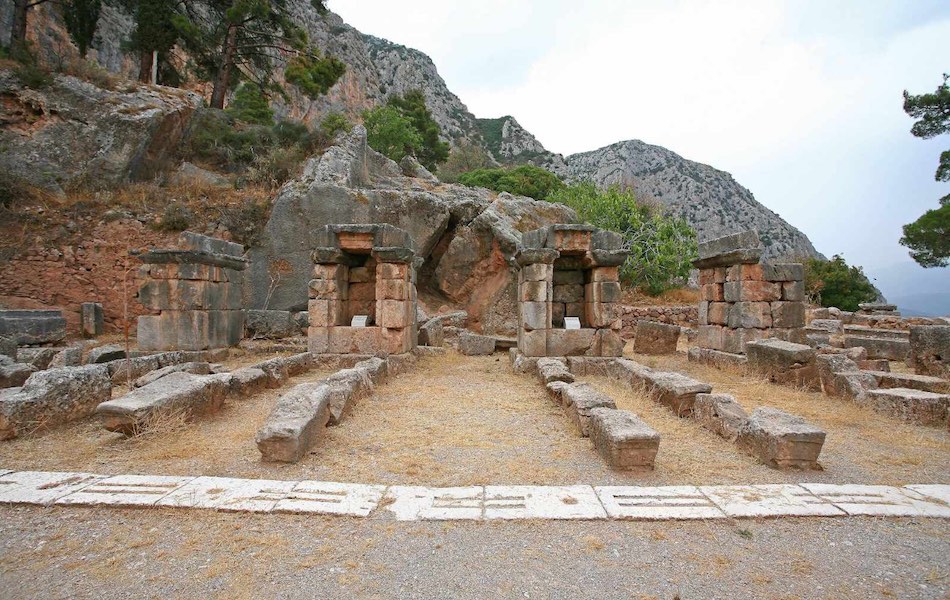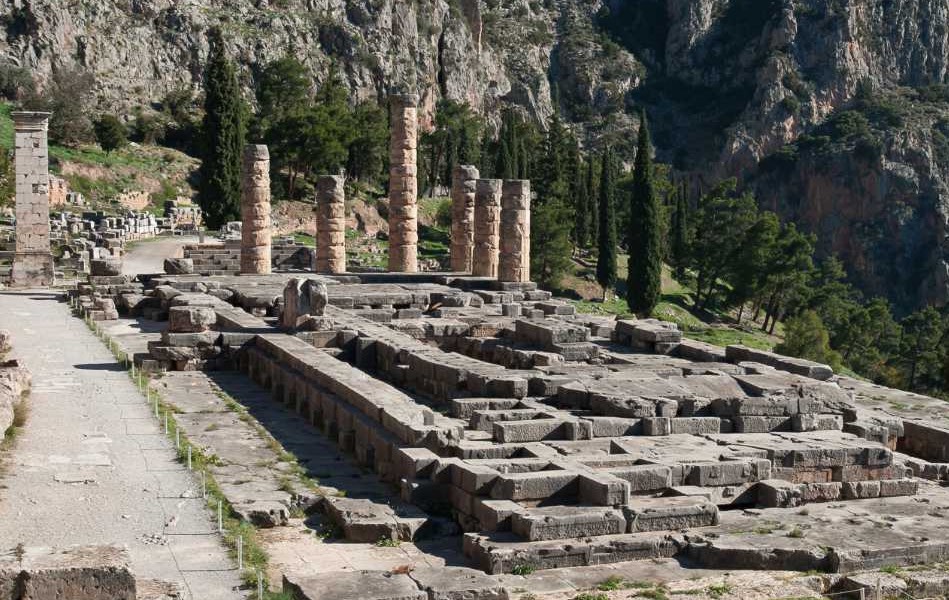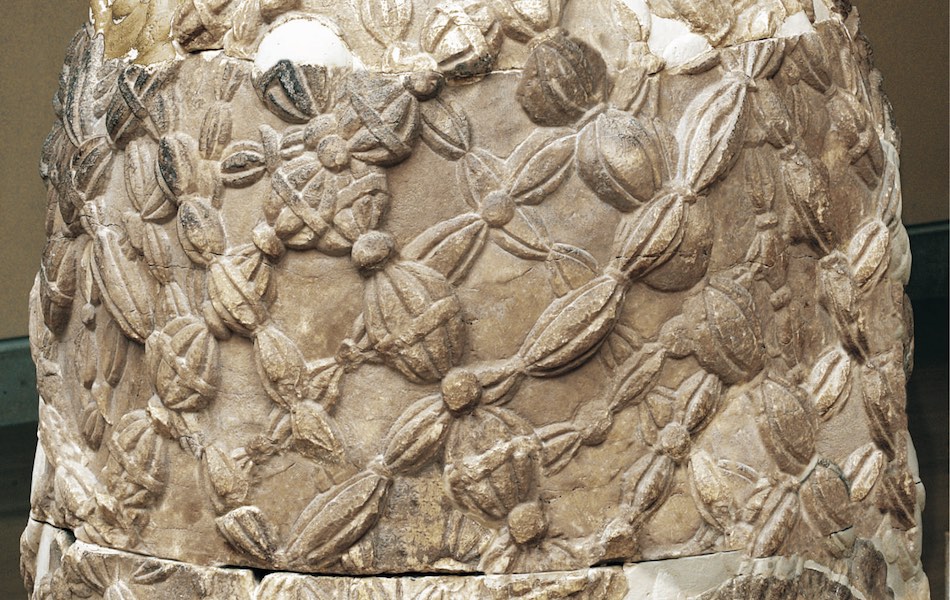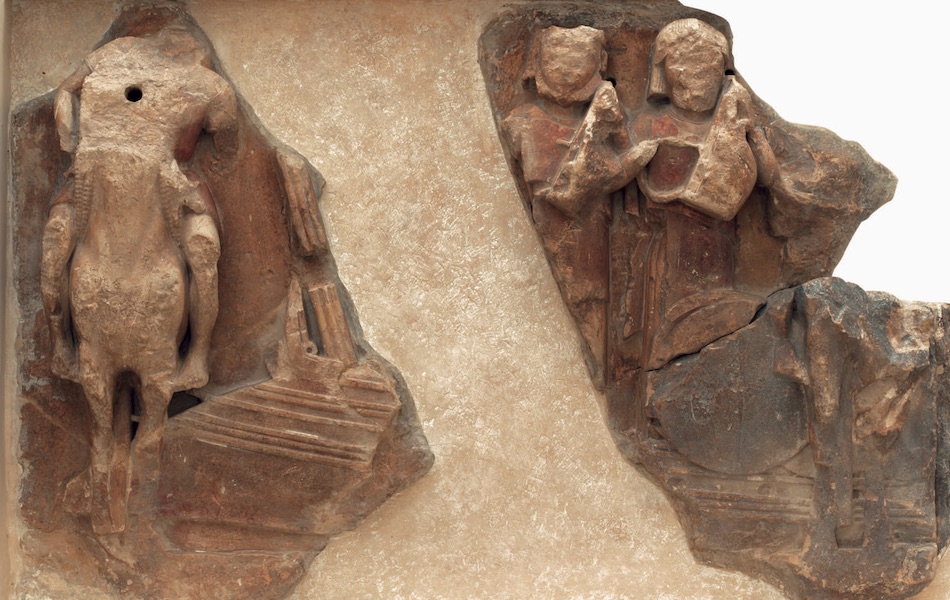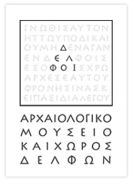This website uses cookies so that we can provide you with the best user experience possible. Cookie information is stored in your browser and performs functions such as recognising you when you return to our website and helping our team to understand which sections of the website you find most interesting and useful.
The Stele and the Sphinx of the Naxians
Naxos was a rich island of the Cyclades with vivid artistic tradition in the archaic period. In ca 560 B.C. the inhabitants of Naxos erected an ex-voto slightly to the north of Sibyl’s Rock on a rock with a flattened top. It was the famous Sphinx, one of the largest sculpted works in the sanctuary of Apollo. It stood on a tall column consisting of six drums, crowned by an Ionian capital. The Sphinx has the head of a woman, the body of a feline, probably a lion, and impressive wings turned upwards. The anatomy and the decorative elements on the wings were rendered with incisions and the addition of colour. Her lips formed an enigmatic smile, typical of the archaic period. The Sphinx is now exhibited in the Archaeological Museum of Delphi.
On the cylindrical base an inscription dated to 328-327 B.C. is recorded, renewing the promanteia for the Naxians, i.e. their right to acquire oracles before the others: «Δελφοί ἀπέδωκαν Ναξίοις τάν προμαντηίαν κάτ τά ἀρχαῖα∙ ἂρχοντος Θεολύτου, βουλεύοντος Ἐπιγένεος». (“Delphi accorded the Naxians the right of Promanteia as before, at the time of archon Theolytos and Epigenes the Bouleutes”). The monument was made entirely of Naxian marble, and its height was approximately 12.45 meters. Looking at the mythical creature must have been awe-inspiring to the visitors of the site. The monument constitutes a typical specimen of Naxian sculpture at its zenith (6th century B.C.).
MUSEUM OF DELPHI


